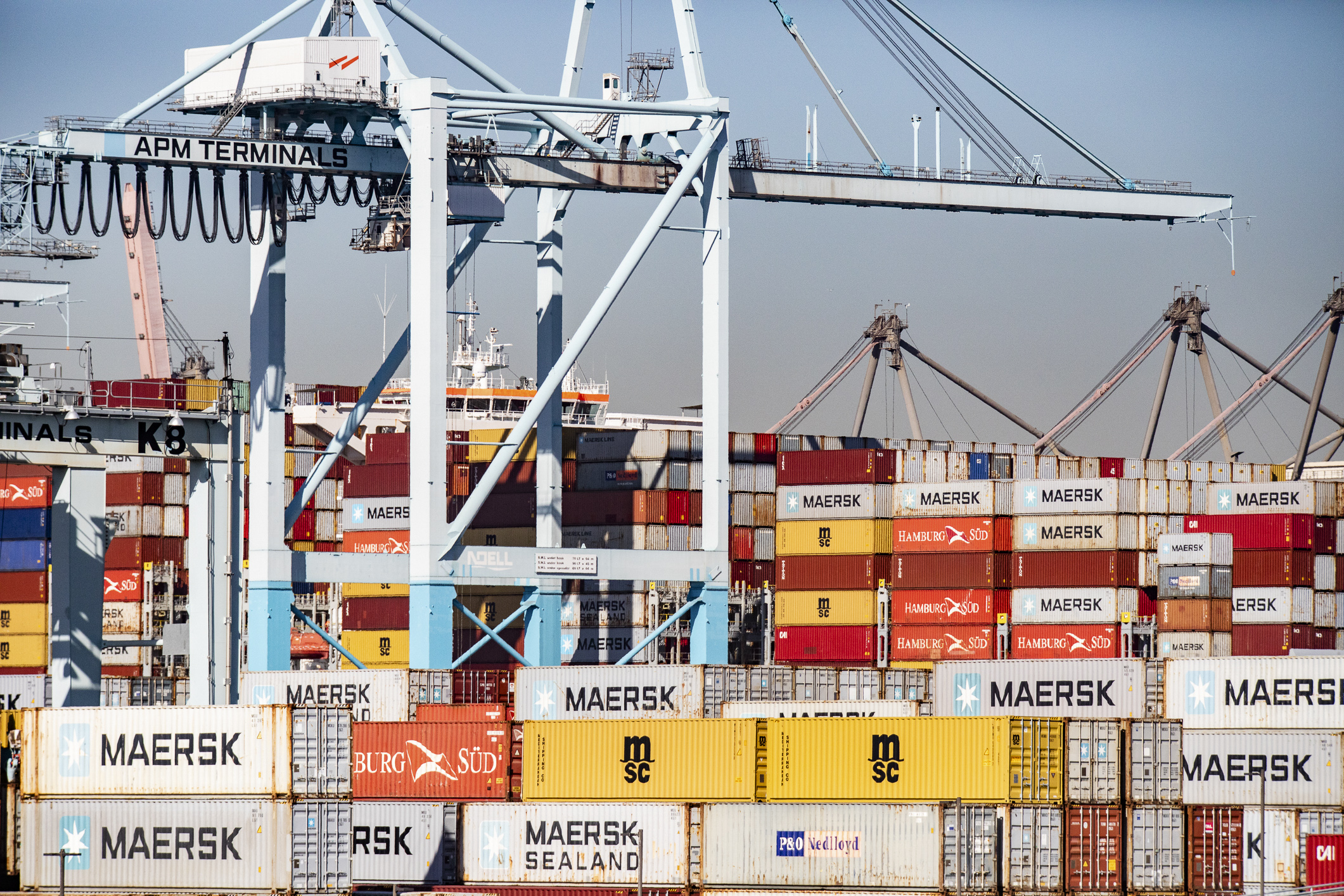The Port of Los Angeles has been given an “unprecedented” $412 million grant in an effort to curb pollution and adopt more zero-emission equipment and infrastructure, said the port on Oct. 29.
The City of Los Angeles’s Harbor Department will use the funds from the U.S. Environmental Protection Agency’s (EPA) Clean Ports Program to replace diesel-powered equipment with battery-electric cargo-handling equipment and zero-emission drayage trucks.
In addition, the port will buy and install charging infrastructure, solar power generation infrastructure, as well as battery energy storage systems.
Funded by the Inflation Reduction Act, the EPA said in an Oct. 29 statement that the investments “will advance environmental justice” by reducing diesel air pollution near U.S. ports.
“While ports of course serve an essential role for moving goods, the costs that they bring in terms of pollution and impacts on overburdened communities must be confronted,” said EPA Pacific Southwest Regional Administrator Martha Guzman in the EPA statement. “Replacing diesel-powered port and freight equipment with clean, zero-emission technologies will reduce air pollution, improve health outcomes in nearby communities, and advance the campaign to tackle climate change.”
The grant will be matched by the port and its private partners with an additional $236 million.
The port plans to purchase nearly 425 pieces of battery electric cargo-handling equipment, install 300 new zero-emission charging ports and other related infrastructure, and deploy 250 zero-emission drayage trucks. The grant will also allocate $50 million for workforce development and community engagement efforts.
The funding will also make possible the purchase of 337 yard tractors, 56 top handlers, 24 heavy-duty forklifts, 10 battery electric storage systems, and two solar arrays.
The EPA expects the grant and matching funds to help decrease annual emissions of nitric oxide and nitrogen dioxide by 55 tons, PM2.5 pollution by 1.5 tons, and greenhouse gases by 41,500 tons. It also expects the funds to eliminate the use of 3.5 million gallons of diesel fuel annually.
“With this funding, the nation’s busiest port will be able to continue to reduce greenhouse gas emissions and improve air quality,” Los Angeles Mayor Karen Bass said in a statement.
The funds are touted by officials as essential to meeting the port’s environmental goals and speeding up the industry’s overall transition to zero-emission infrastructure.
“Human operated, zero-emission cargo-handling equipment is the gold standard for maritime port operations not only because it protects good jobs while cleaning the air, but is also the most efficient and cost-effective in terms of port operations, while additionally providing the necessary safeguards against cyber threats to our national security,” said Gary Herrera, president of the International Longshore and Warehouse Union (ILWU), Local13, in a statement.
Other California Cities
The EPA received more than $8 billion worth of funding requests from applicants across the country.Seven California ports altogether, including Los Angeles, were chosen to receive a combined $1 billion through the Clean Ports Program.
The funds will go toward similar purposes at several of the ports, including the deployment of electric and hydrogen cargo handling equipment, trucks, charging infrastructure, battery energy storage systems, and the scrapping of some of the existing diesel fleet.
The Port of San Francisco will use an expected $55 million to complete an emissions-free ferry system on the waterfront and two terminals located in Alameda County.
The Port Department of the City of Oakland will receive an expected $322 million for equipment upgrades and other projects, and the Port of Redwood City will receive nearly $2 million. Meanwhile, the Stockton Port District will receive an expected $110 million.
The San Diego Unified Port District will also receive an anticipated $59 million, while the Oxnard Harbor District Port of Hueneme will receive $41 million.













